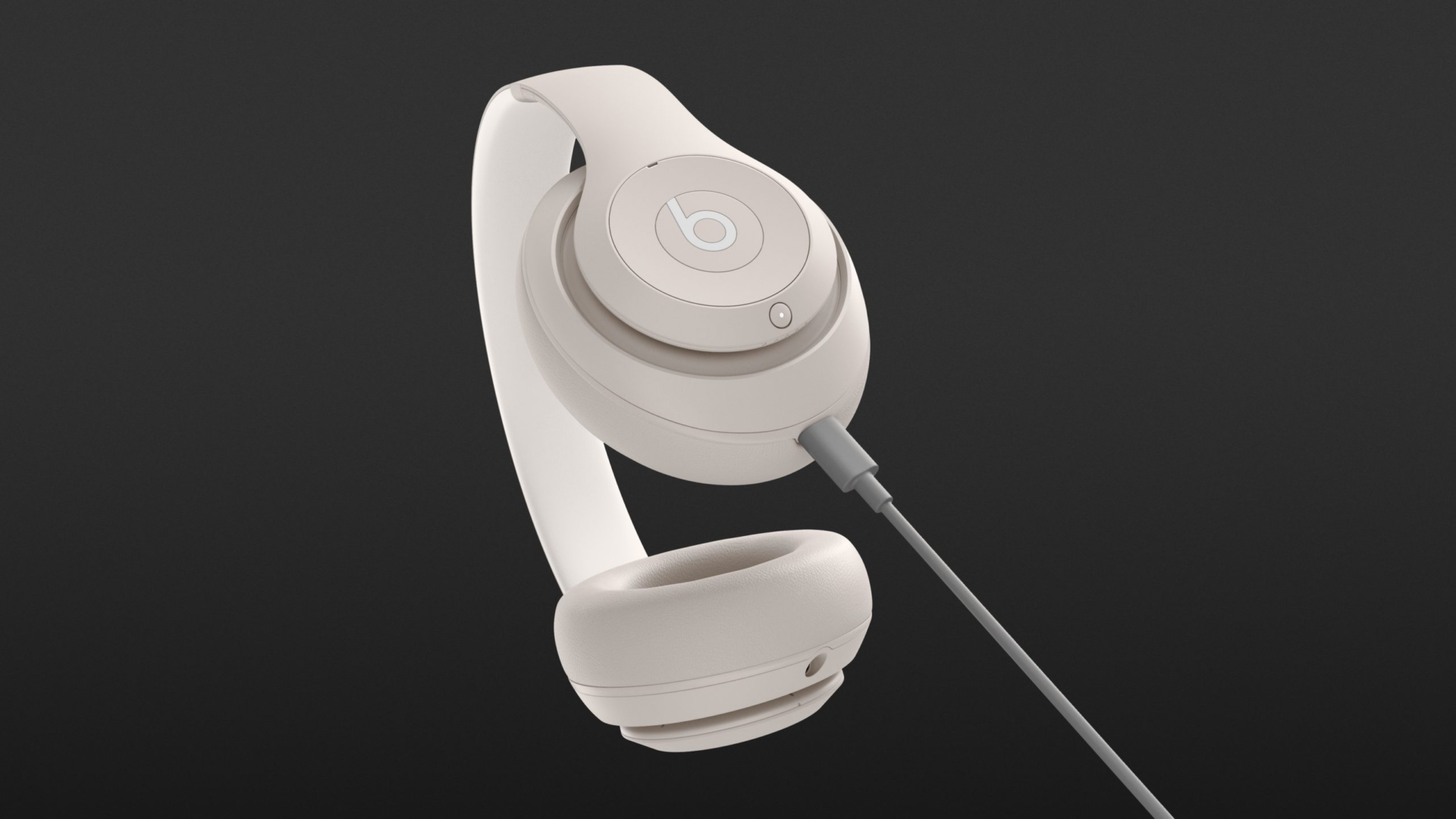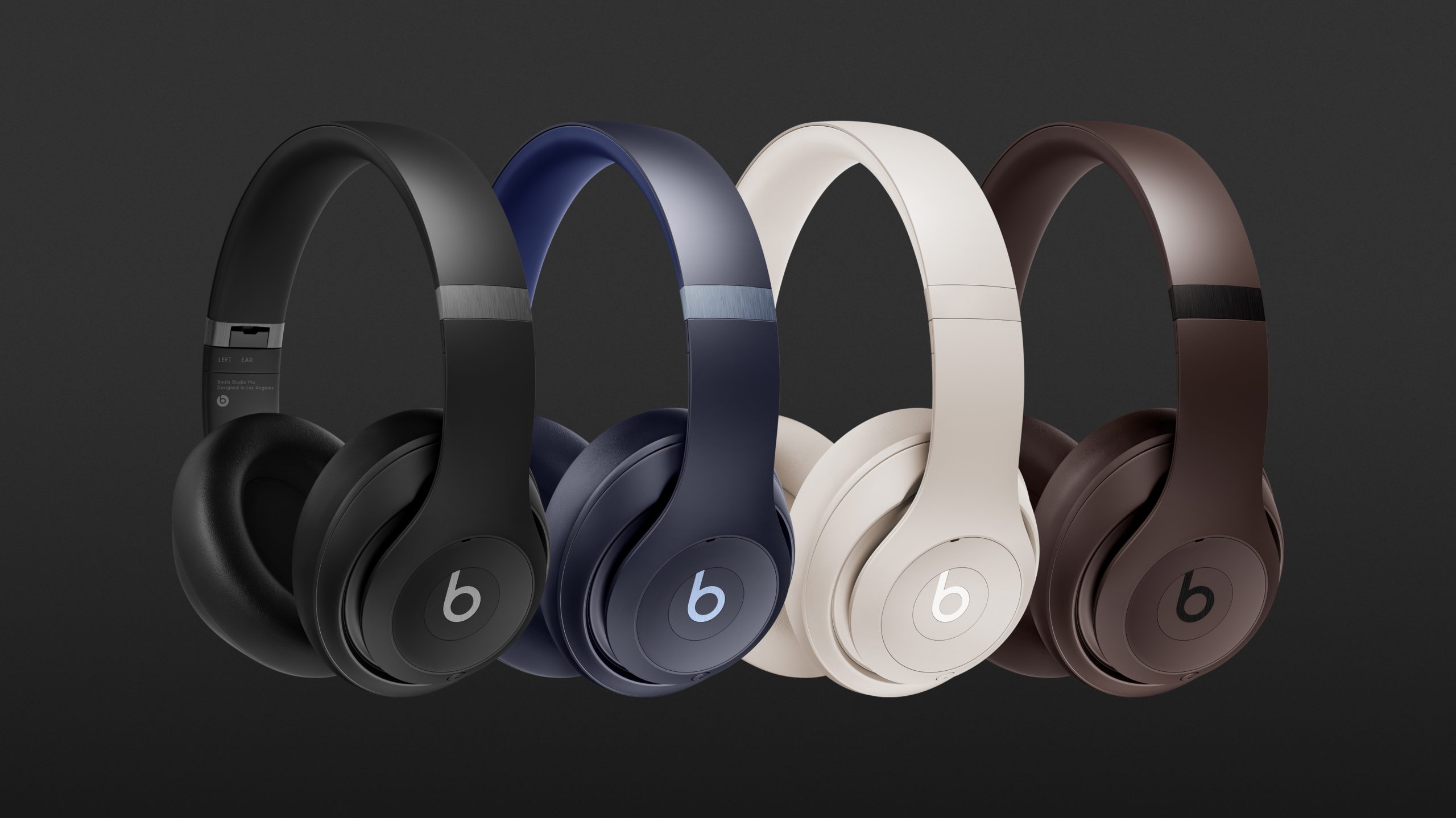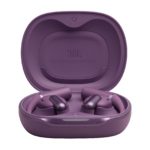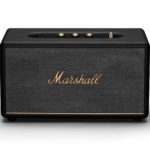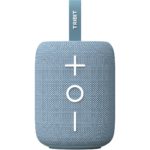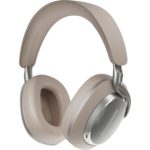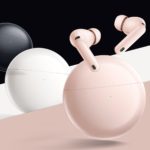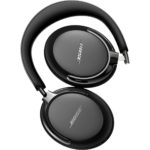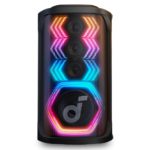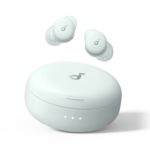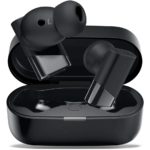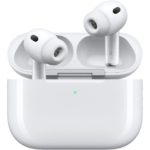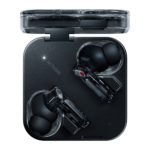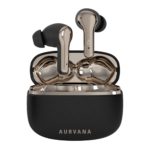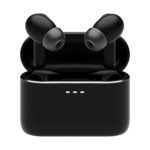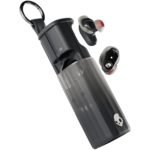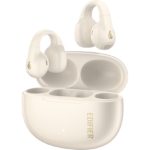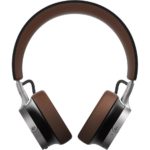With the Studio Pro, Beats have released a very good-sounding and functionally convincing over-ear, and this presents a challenge to the ageing Apple AirPods Max. Superior in crucial ways, at least equal in terms of sound and significantly more attractive in terms of price, the Beats Studio Pro gets our recommendation for fans of both Apple and Android devices.
- Very good sound
- 3D audio capable
- Convincing noise cancelling
- Good battery life
- USB audio functionality
- No multipoint
- No wear detection
With the Beats Studio Pro, Apple make a spirited move into the headphone market that not only attacks their ageing Apple AirPods Max but also aims to win over the Android community.
Beats Studio Pro: headphones for both the Android and Apple universes
In recent headphone tests, the question of the platform always pops up.
How smoothly do the headphones behave in the Apple universe or with my Android devices? Can I locate them if I ever need to find one or both of the earpieces or even the entire over-ear?
Choosing the right product is not easy, particularly as you come up against some annoying problems with the sinfully expensive AirPods Max. For example, they only have a Lightning connector and have no USB or Hi-Res Audio.
With the Beats Studio Pro, Beats have created a headset that works in both worlds, and they want to recapture some of the market share in the around 400 euros price range from Bowers & Wilkins, Sony and Sennheiser. Apple AirPods Max fans might also be asking themselves whether the top model from the subsidiary company might be good enough for them, particularly if they need to replace their celebrated Max sometime soon.
The special features of the Beats Studio Pro
As well as having good sound, great noise-cancelling and an impressive transparency mode, battery life and wearing comfort are among the most important features of a 400-euro pair of headphones. But the Beats Studio Pro have a few more tricks up their sleeve:
- 3D audio that enables you to enjoy immersive listening using Dolby Atmos (Apple only)
- Dynamic head tracking – where the sound follows your head movement (Apple only)
- Individual adjustment to your own ear profile (Apple only)
- USB audio enables lossless High-Res audio and platform-independent low-latency listening conditions for media production
Beats Studio Pro wearing comfort
At 260 grams, the Beats Studio Pro are lighter than their smaller predecessor, the Solo Pro, just slightly heavier than the Sony WH-1000XM5, and noticeably lighter than the Bowers & Wilkins Px7 S2 or even the Apple AirPods Max, which are 120 grams heavier.
A folding mechanism allows the Beats Studio Pro to be folded to a compact size and stored in a textile bag, which is included along with the cable.
On my rather large head, I could wear the Beats Studio Pro for a good hour without any discomfort, even if in the summer months, “heat generation” and “sweating” were significant issues depending on the temperature. In this respect, the thick fabric ear pads of the AirPods Max provided a better wearing temperature than the Studio Pro’s ear pads, which are made of fine synthetic leather and seal tightly on the ears.
Beats Studio Pro Handling
The Beats Studio Pro do not have wearer recognition. If you set the headphones down, they continue to play. As expected, the pairing worked smoothly via Android (Google Fast Pair) and Apple operating systems. Since the Studio Pro do not support (true) multipoint, the existing connection must first be disconnected, but this worked surprisingly well even in parallel operation between the Android and iOS worlds by logging off one connection and logging on to the other: for example, when listening to music via Android an incoming call via iPhone could be accepted and was immediately routed to the Beats Studio Pro with a tap of a finger on the phone. The Bluetooth connection to the Android player was immediately terminated, and a new connection to the iPhone was established. Similarly, it was possible to switch “silently” between iPad, MacBook, iPhone and Android mobile phones.
Operating the Beats Studio Pro
The Beats Studio Pro are operated haptically via the left side: With a clearly audible click, calls can be accepted and audio events are controlled in the standard fashion. The volume can be controlled via the rocker function of the “B-Button”. Compared to touch-sensitive concepts, I still find this to be the more successful method of operating over-ear headphones.
Beats Studio Pro – management via app
While the Beats fit elegantly into the standard Apple environment, use with Android requires an app that handles the essentials of control and setup in the usual way. This includes a “device search” function that only works if both your mobile phone and the Studio Pro headphones are registered to the same Google account. In addition, noise cancellation, transparency mode and other functions can be controlled via the pairing button on the right ear cup, and call control can also be configured.
Beats Studio Pro – Control in the Apple environment
As can be seen in the screenshots, Apple embed the Studio Pro in their iOS or OS operating systems in the best possible way. The 3D audio functionality, among other things, can be managed here up to and including personalisation using the camera to scan and create your ear profiles. For this test, I set up a 3D profile, and it certainly played a role in my sound assessment.
USB audio – using Beats Studio Pro with a cable
A feature that I really appreciated with the Bower & Wilkins headphones such as Px7 S2 or Px8 was the option to connect the headphones via USB audio to a computer, iPad (Pro) or any other audio device. The advantage: get sound without loss, so you can easily use the Beats Studio Pro as a “monitor” via USB-C cable, and the integrated microphone can also be used as a USB audio return channel. Although the voice quality may not be sufficient for producing higher-quality audio, the Studio Pro are ideally suited as headphones for media productions such as podcasts, as well as for video editing.
There is an analogue mini-jack cable for use with standard audio players, but this is very short at approx. 130 cm. Of course, this earns praise from me, as it also makes the Beats Studio Pro the perfect travel companion if you want to enjoy an in-flight programme on flights but choose not to go down the wireless audio route. In mini-jack mode, noise cancelling and transparency mode remain on offer, but not via USB audio: instead, a button on the right-hand side of the headphones switches between the three sound profiles “Music”, “Speech” and “Gaming”.
Is the sound of the Beat Studio Pro better than that of the Apple AirPods Max?
Let’s get straight to my assessment of the sound, which behaves differently depending on the quality level – and on the type of connection, the Bluetooth codec used and the source material. One thing was for sure: the Beats Studio Pro go head-to-head with the celebrated AirPods Max and can beat them to the finish line in crucial ways.
Noise cancelling
First of all, the Beats Studio Pro impressed me in “everyday use” with an unagitated and tidy sound, although we still need to talk about noise cancelling. Because I always use headphones of this quality with noise cancelling and, if necessary, with the transparency mode switched on or off. The reason: the change in sound was so minimal and noise so barely perceptible that a cost-benefit decision here – also taking power consumption into account – speaks in favour of permanent noise cancelling.
For everyday use – radio, podcasts, listening to a little music for relaxation while riding the train – the Beats Studio Pro were extremely pleasant headphones for all styles of music and types of programmes.
When listening consciously to music, it gets a bit more exciting. Here, the Studio Pro were directly compared with the AirPods Max because the sound is similar in texture, even if the feel of the Max is different. If you ignore the subjective, both sets of headphones play almost on par with the AAC codec. The AirPods Max interpret the bass as more “rounded” with a higher volume content, while the Beats bring bass that is a little crisper and more impulsive. The Beats Studio Pro resolve the treble a little less with standard codecs but easily make up for this with Hi-Res signals via USB audio (which the AirPods Max cannot do).
With 3D audio on par, Beats’ Studio Pro wins with USB audio
Things get really exciting when you get to the 3D audio, e.g. Dolby Atmos productions, which Apple offers in the Music app. But right away, I have to say that I don’t see Dolby Atmos as a benefit per se for the enjoyment of music. Of course, watching a production like “Dune” in the Dolby Atmos version is already acoustically a benefit via Bluetooth, but via USB audio, it is a real bonus since the information is resolved much more finely.
There are now a number of remaster productions in Dolby Atmos, which can be found at Apple Music, and in other places. Most of the classical music releases are quite impressive, and they would benefit from a re-release with regard to spatiality, which the Beats Studio Pro handles with aplomb. Wherever a stage was used for recording, as with most jazz classics, I enjoy Dolby Atmos productions. The Beats Studio Pro are fun for this sort of listening.
Compared to pure stereo mixes, current productions with Atmos versions are also fun to listen to, since they are produced with a focus on spatiality and basses, which often get more room to develop and specific effects enrich the sound image three-dimensionally. For example, listen to the track “Paint The Town Red” by Doja Cat.
Some Pink Floyd or Beatles productions continue to sound better to me as “masterpieces of stereophony” rather than in the “atmospheric” versions, but when it comes to this sort of thing, we’re talking about matters of personal taste.
What it boils down to: The Beats Studio Pro compare favourably to the Apple AirPods Max in terms of sound, but they also take on competitors such as Sony, Sennheiser and Bowers & Wilkins.
The Beats Studio Pro in practice
We put the Beats Studio Pro through their paces in a test lasting just under four weeks and “experienced” them in a wide variety of everyday situations. The battery life with a stated maximum of 40 hours (without ANC) was never a problem for us, especially since recharging was included in our USB audio tests. A USB power supply was not included in the package, but a 130 cm USB-C cable, which was too short, was.
The Bluetooth range was also good. Our office coffee machine test, which involves an approx. 10-metre walk with two lightweight walls in between, was passed without dropouts.
The wearing comfort was good. Of course, it’s less fun to wear over-ears for hours on end in summer, but in winter, the Studio Pro will work well as an ear warmer, especially as they look smart (they are available in sandstone, navy, espresso and black) and don’t stand out as much as the AirPods Max. The materials and workmanship are of a high standard; nothing pulls or cracks, and the Studio Pro can be conveniently stored in the pouch that comes as part of the package.
- The build quality of the Beats Studio Pro is on a high level, and it is available for purchase in Sandstone, Navy, Espresso, and Black.
How good are Beats Studio Pro’s transparency mode and noise cancelling?
The transparency mode was convincing and virtually acted as a subcategory to the noise cancellation (ANC): Conversations could be understood more or less 1:1 very well, and spatial perception was also largely preserved, so that with the Beats Studio Pro you are always acoustically in control, even in traffic or when walking in the countryside.
The noise cancelling is one of the best currently available on the market. Noise was effectively dampened by a protective blanket; even with better, i.e. more technically complex systems, the frequencies are dampened to a similar extent. The Beats Studio Pro do this well, possibly even a tad better than the Apple AirPods Max. Wind noise outside was audible but remained within the usual range.
Integration with both iOS and Android smartphones and tablets worked extremely well, although the Studio Pro had a few advantages when it came to 3D audio, which we described in detail in the relevant section of this review.
Making calls with the Beats Studio Pro
The Beats Studio Pro handled phone calls as well as video calls without any problems and with high speech intelligibility, and transferring a call from one device to another was also very smooth, considering that the Bluetooth connections first have to be logged off and then logged on again.
Conclusion
With the Studio Pro, Beats, or rather Apple, has released a very good-sounding and functionally convincing over-ear in the highly competitive price range of around 400 euros. These headphones also challenge the company’s own, now rather ageing Apple AirPods Max. The Beats Studio Pro are superior to the AirPods Max in crucial ways, and they are at least their equal in terms of sound while being significantly more attractive in terms of price.
Technical specifications
- Ear couplingOver-ear
- Typeclosed
- Transducer principledynamic
- Weight without cable260 g
What's in the box
- Mini jack cable
- USB-C charging cable
- Travel case
Special features
- Available in sandstone, navy, espresso and black
- BT codecs: SBC, AAC








